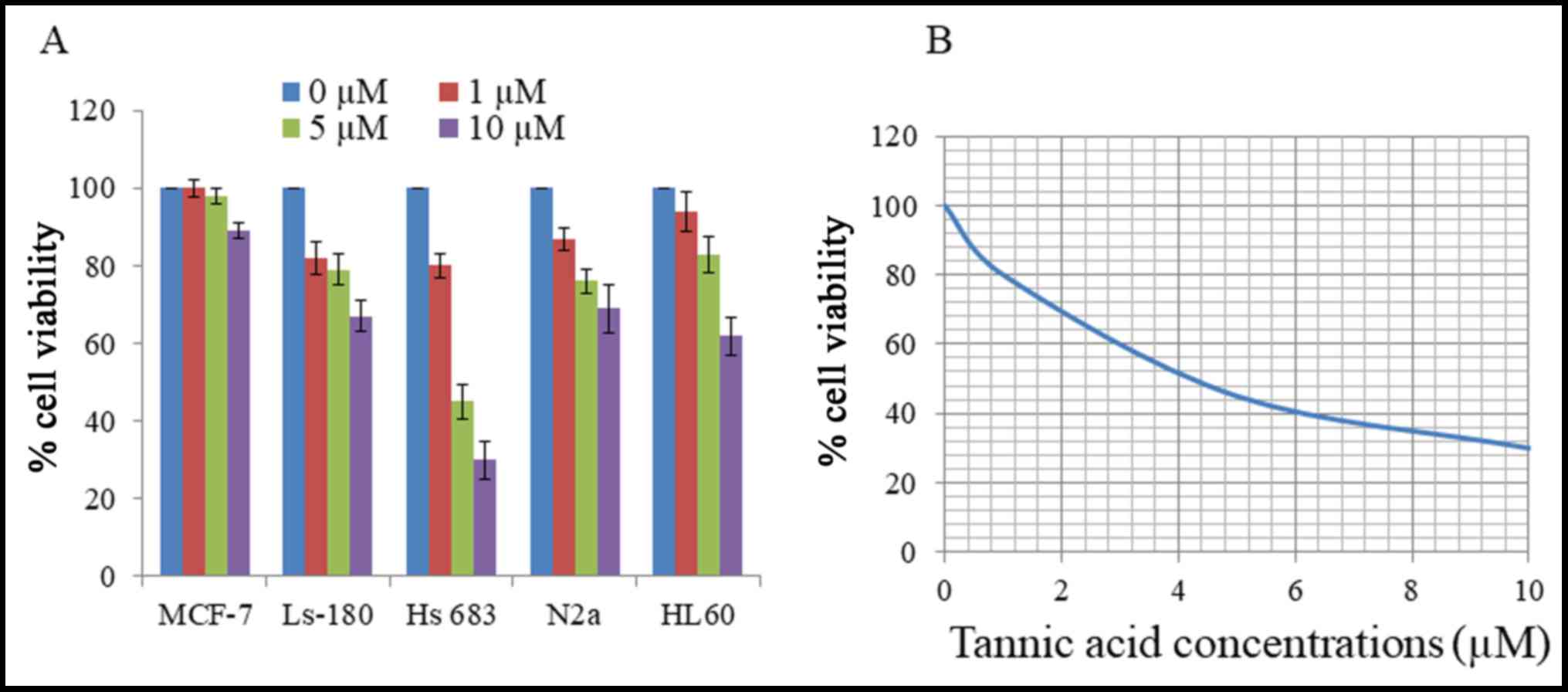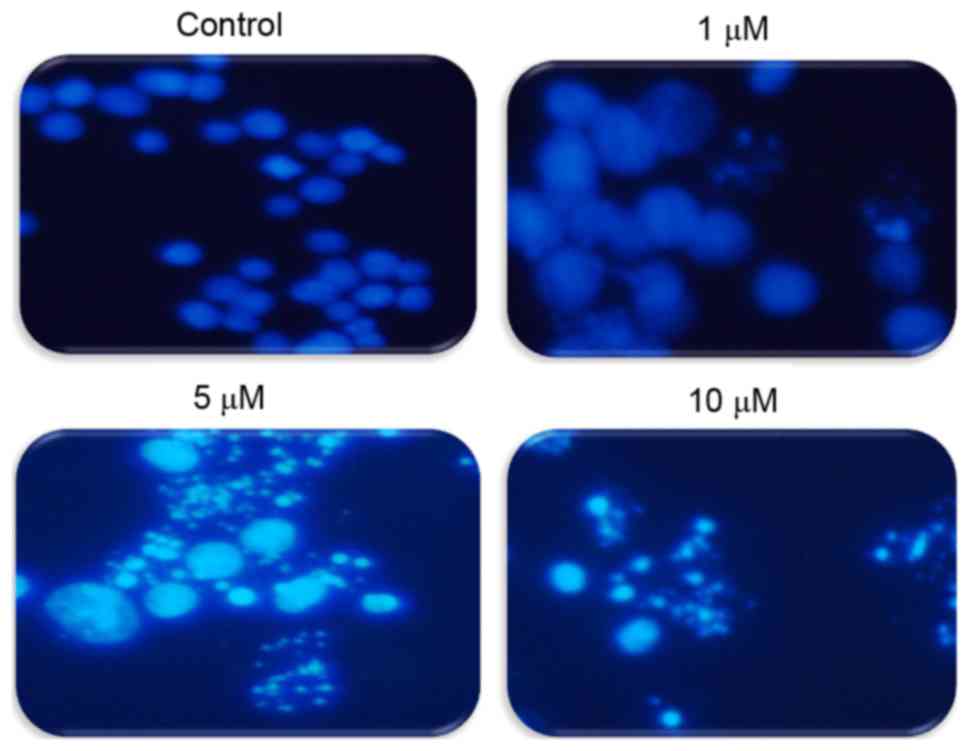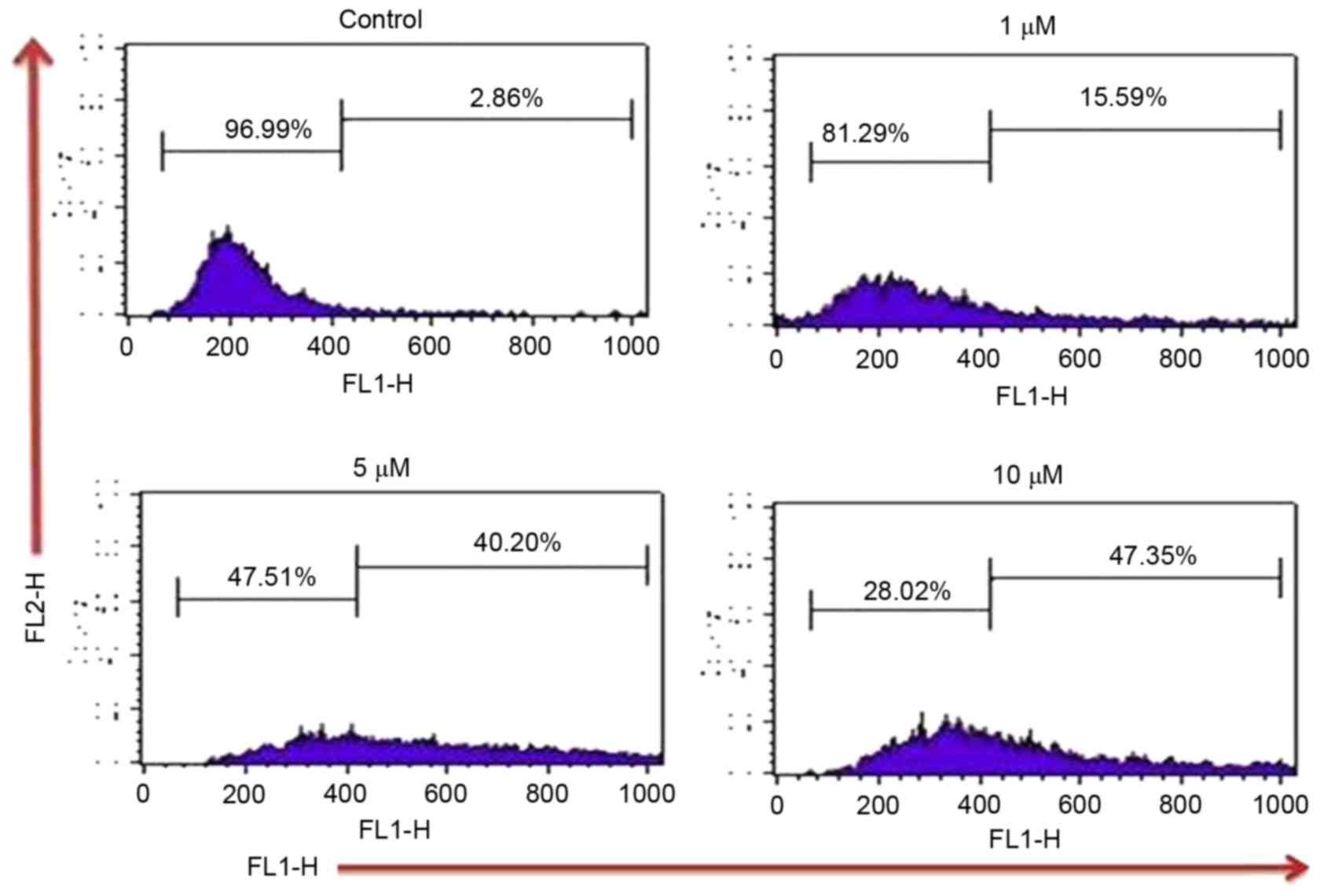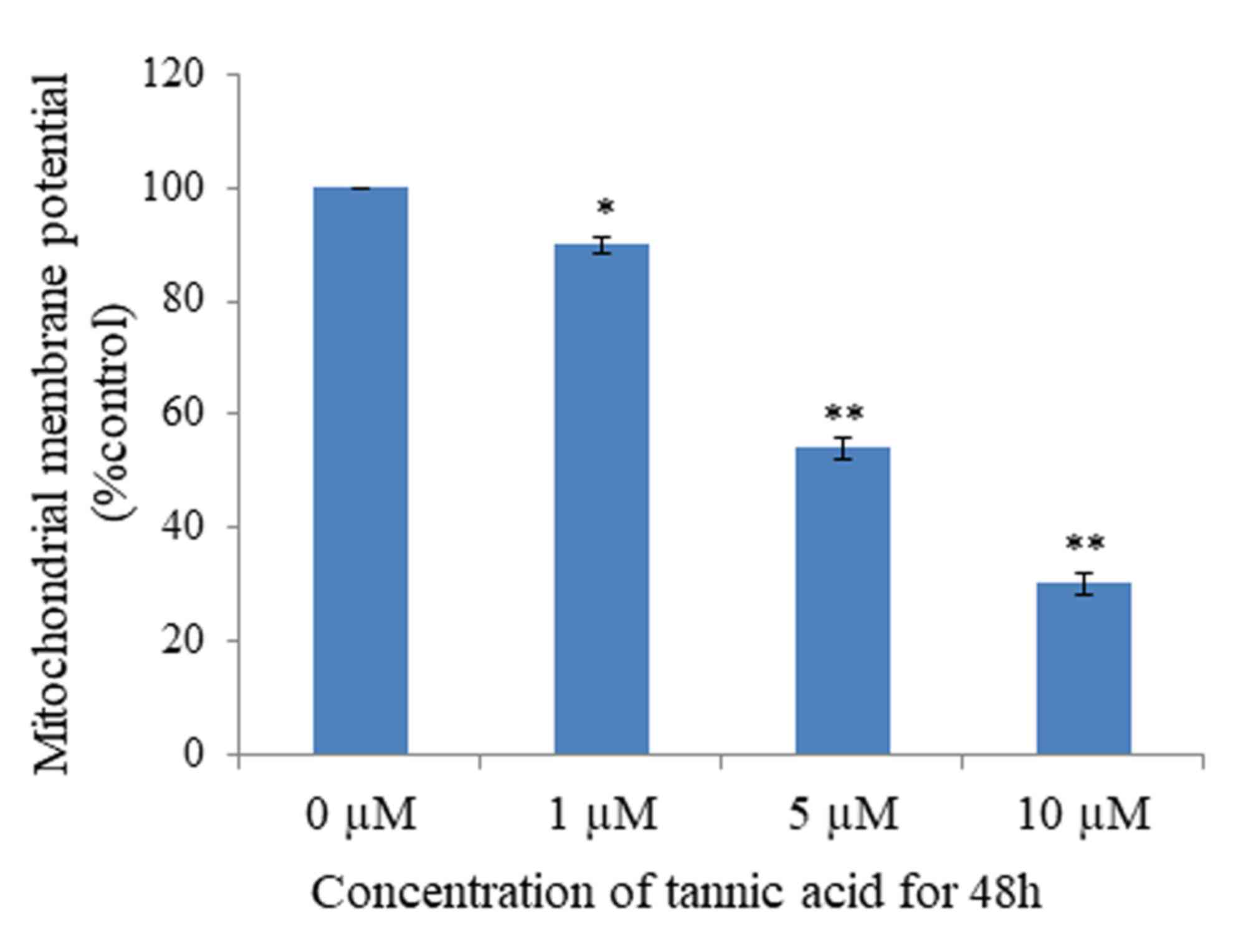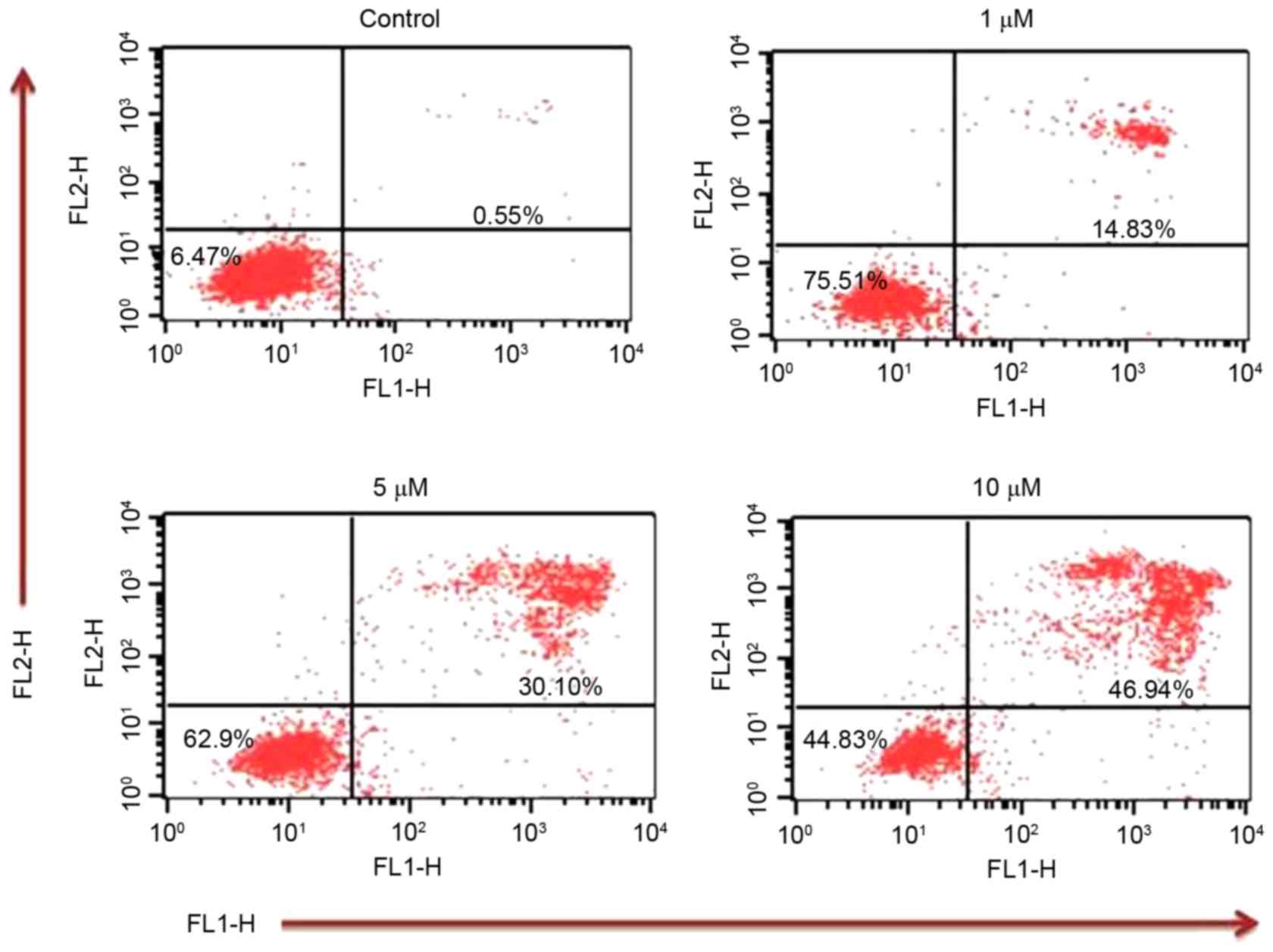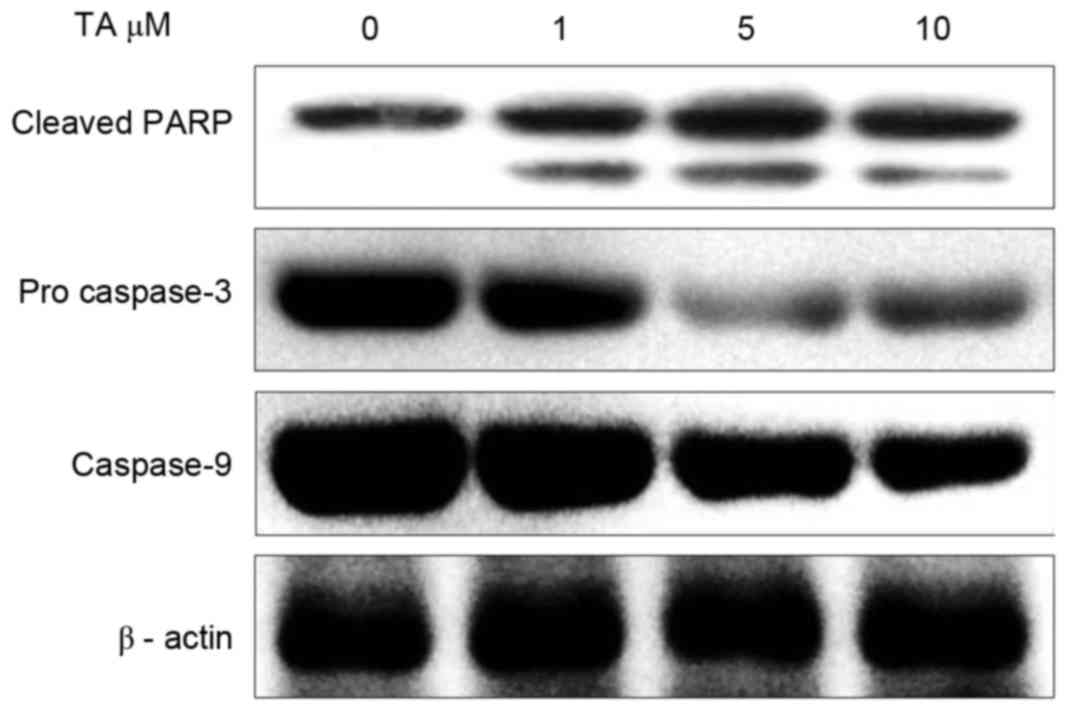|
1
|
Jemal A, Bray F, Center MM, Ferlay J, Ward
E and Forman D: Global cancer statistics. CA Cancer J Clin.
61:69–90. 2011. View Article : Google Scholar : PubMed/NCBI
|
|
2
|
Louis DN, Ohgaki H, Wiestler OD, Cavenee
WK, Burger PC, Jouvet A, Scheithauer BW and Kleihues P: The 2007
WHO classification of tumors of the central nervous system. Acta
Neuropathol. 114:97–109. 2007. View Article : Google Scholar : PubMed/NCBI
|
|
3
|
Fuller GN: The WHO classification of
tumours of the central nervous system. 4th edition. Arch Pathol Lab
Med. 132:9062008.PubMed/NCBI
|
|
4
|
Rock K, McArdle O, Forde P, Dunne M,
Fitzpatrick D, O'Neill B and Faul C: A clinical review of treatment
outcomes in glioblastoma multiforme-the validation in a non-trial
population of the results of a randomised Phase III clinical trial:
Has a more radical approach improved survival? Br J Radiol.
85:e729–e733. 2012. View Article : Google Scholar : PubMed/NCBI
|
|
5
|
Singh S, Sharma B, Kanwar SS and Kumar A:
Lead phytochemicals for anticancer drug development. Front Plant
Sci. 7:16672016. View Article : Google Scholar : PubMed/NCBI
|
|
6
|
Rahman MA, Amin AR and Shin DM:
Chemopreventive potential of natural compounds in head and neck
cancer. Nutr Cancer. 62:973–987. 2010. View Article : Google Scholar : PubMed/NCBI
|
|
7
|
D'Alessandro N, Poma P and Montalto G:
Multifactorial nature of hepatocellular carcinoma drug resistance:
Could plant polyphenols be helpful? World J Gastroenterol.
13:2037–2043. 2007. View Article : Google Scholar : PubMed/NCBI
|
|
8
|
Rudolf E, Andelová H and Cervinka M:
Polyphenolic compounds in chemoprevention of colon cancer-targets
and signaling pathways. Anticancer Agents Med Chem. 7:559–575.
2007. View Article : Google Scholar : PubMed/NCBI
|
|
9
|
Stevenson DE and Hurst RD: Polyphenolic
phytochemicals-just antioxidants or much more? Cell Mol Life Sci.
64:2900–2916. 2007. View Article : Google Scholar : PubMed/NCBI
|
|
10
|
Fresco P, Borges F, Diniz C and Marques
MP: New insights on the anticancer properties of dietary
polyphenols. Med Res Rev. 26:747–766. 2006. View Article : Google Scholar : PubMed/NCBI
|
|
11
|
Romani A, Ieri F, Turchetti B, Mulinacci
N, Vincieri FF and Buzzini P: Analysis of condensed and
hydrolysable tannins from commercial plant extracts. J Pharm Biomed
Anal. 41:415–420. 2006. View Article : Google Scholar : PubMed/NCBI
|
|
12
|
Gali-Muhtasib HU, Yamout SZ and Sidani MM:
Tannins protect against skin tumor promotion induced by
ultraviolet-B radiation in hairless mice. Nutr Cancer. 37:73–77.
2000. View Article : Google Scholar : PubMed/NCBI
|
|
13
|
Sakagami H, Jiang Y, Kusama K, Atsumi T,
Ueha T, Toguchi M, Iwakura I, Satoh K, Ito H, Hatano T and Yoshida
T: Cytotoxic activity of hydrolyzable tannins against human oral
tumor cell lines-a possible mechanism. Phytomedicine. 7:39–47.
2000. View Article : Google Scholar : PubMed/NCBI
|
|
14
|
Pan MH, Lin JH, Lin-Shiau SY and Lin JK:
Induction of apoptosis by penta-O-galloyl-beta-D-glucose through
activation of caspase-3 in human leukemia HL-60 cells. Eur J
Pharmacol. 381:171–183. 1999. View Article : Google Scholar : PubMed/NCBI
|
|
15
|
Wang CC, Chen LG and Yang LL: Cuphiin D1,
the macrocyclic hydrolyzable tannin induced apoptosis in HL-60 cell
line. Cancer Lett. 149:77–83. 2000. View Article : Google Scholar : PubMed/NCBI
|
|
16
|
Yang LL, Lee CY and Yen KY: Induction of
apoptosis by hydrolyzable tannins from Eugenia jambos L. on human
leukemia cells. Cancer Lett. 157:65–75. 2000. View Article : Google Scholar : PubMed/NCBI
|
|
17
|
Nam S, Smith DM and Dou QP: Tannic acid
potently inhibits tumor cell proteasome activity, increases p27 and
Bax expression, and induces G1 arrest and apoptosis. Cancer
Epidemiol Biomarkers Prev. 10:1083–8. 2001.PubMed/NCBI
|
|
18
|
Blacher E, Levy A, Baruch BB, Green KD,
Garneau-Tsodikova S, Fridman M and Stein R: Targeting CD38 in the
tumor microenvironment: A novel approach to treat glioma. Cancer
Cell Microenvironment. 2:22015.
|
|
19
|
Lavrik IN, Golks A and Krammer PH:
Caspases: Pharmacological manipulation of cell death. J Clin
Invest. 115:2665–2672. 2005. View
Article : Google Scholar : PubMed/NCBI
|
|
20
|
Sakahira H, Enari M and Nagata S: Cleavage
of CAD inhibitor in CAD activation and DNA degradation during
apoptosis. Nature. 391:96–99. 1998. View
Article : Google Scholar : PubMed/NCBI
|
|
21
|
Daly JS and Cooney DO: Interference by
tannic acid with the effectiveness of activated charcoal in
‘Universal Antidote’. Clin Toxicol. 12:515–522. 1978. View Article : Google Scholar : PubMed/NCBI
|
|
22
|
Hupkens P, Boxma H and Dokter J: Tannic
acid as a topical agent in burns: Historical considerations and
implications for new developments. Burns. 21:57–61. 1995.
View Article : Google Scholar : PubMed/NCBI
|
|
23
|
Shi-Tsi S: Use of combined traditional
Chinese and Western medicine in the management of burns. Panminerva
Med. 25:197–202. 1983.PubMed/NCBI
|
|
24
|
Mala A and Tulika T: Therapeutic efficacy
of Centella asiatica (L.) and Momordica charantia: As traditional
medicinal plant. J Plant Sci. 3:1–9. 2015.
|
|
25
|
Naus PJ, Henson R, Bleeker G, Wehbe H,
Meng F and Patel T: Tannic acid synergizes the cytotoxicity of
chemotherapeutic drugs in human cholangiocarcinoma by modulating
drug efflux pathways. J Hepatol. 46:222–229. 2007. View Article : Google Scholar : PubMed/NCBI
|
|
26
|
Ramanathan R, Tan CH and Das NP: Cytotoxic
effect of plant polyphenols and fat-soluble vitamins on malignant
human cultured cells. Cancer Lett. 62:217–224. 1992. View Article : Google Scholar : PubMed/NCBI
|
|
27
|
Booth BW, Inskeep BD, Shah H, Park JP, Hay
EJ and Burg KJ: Tannic acid preferentially targets estrogen
receptor-positive breast cancer. Int J Breast Cancer.
2013:3696092013. View Article : Google Scholar : PubMed/NCBI
|



